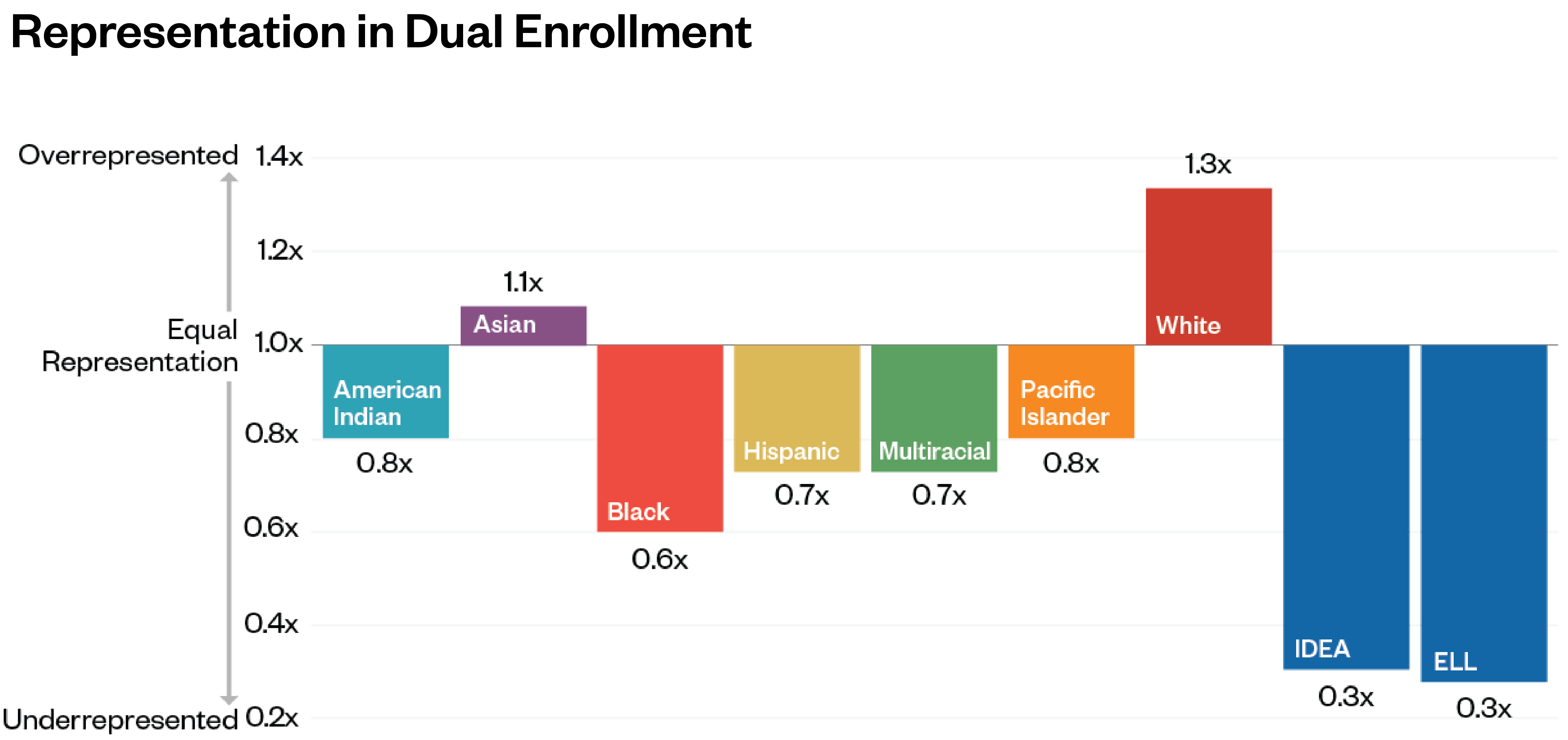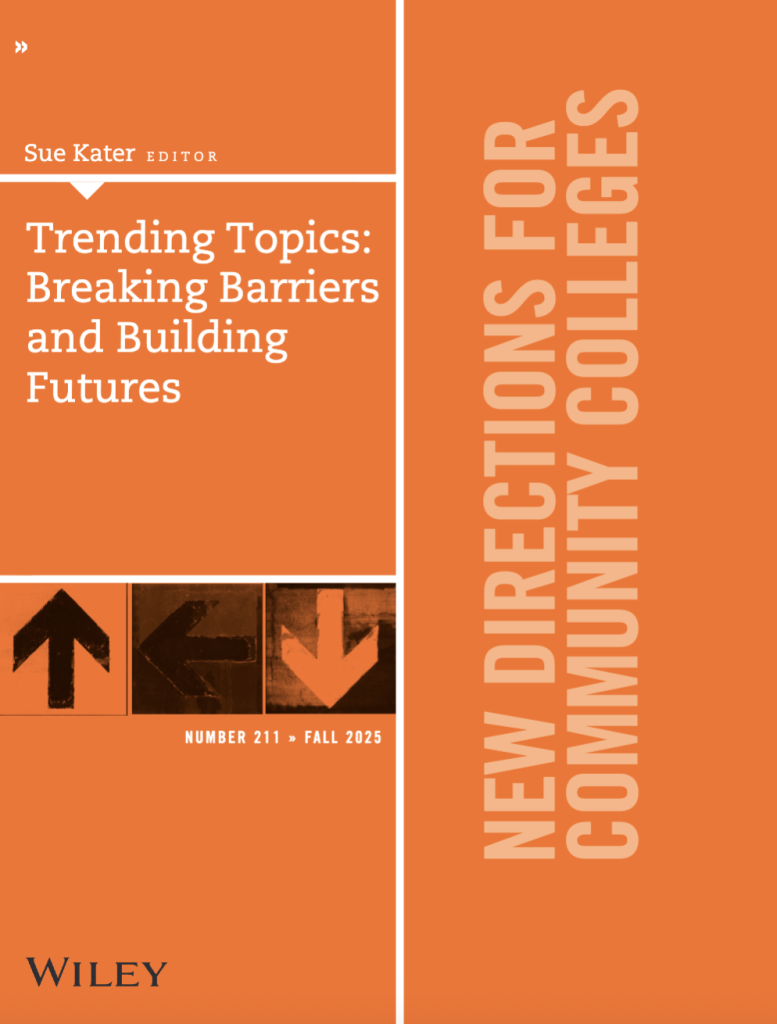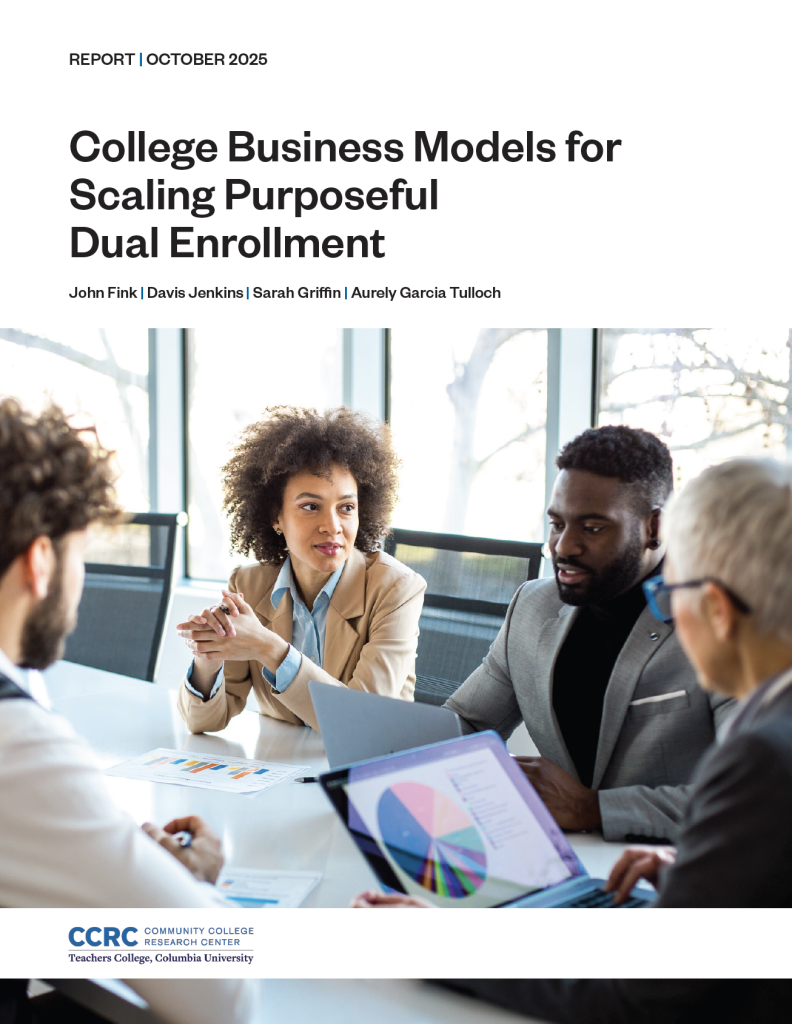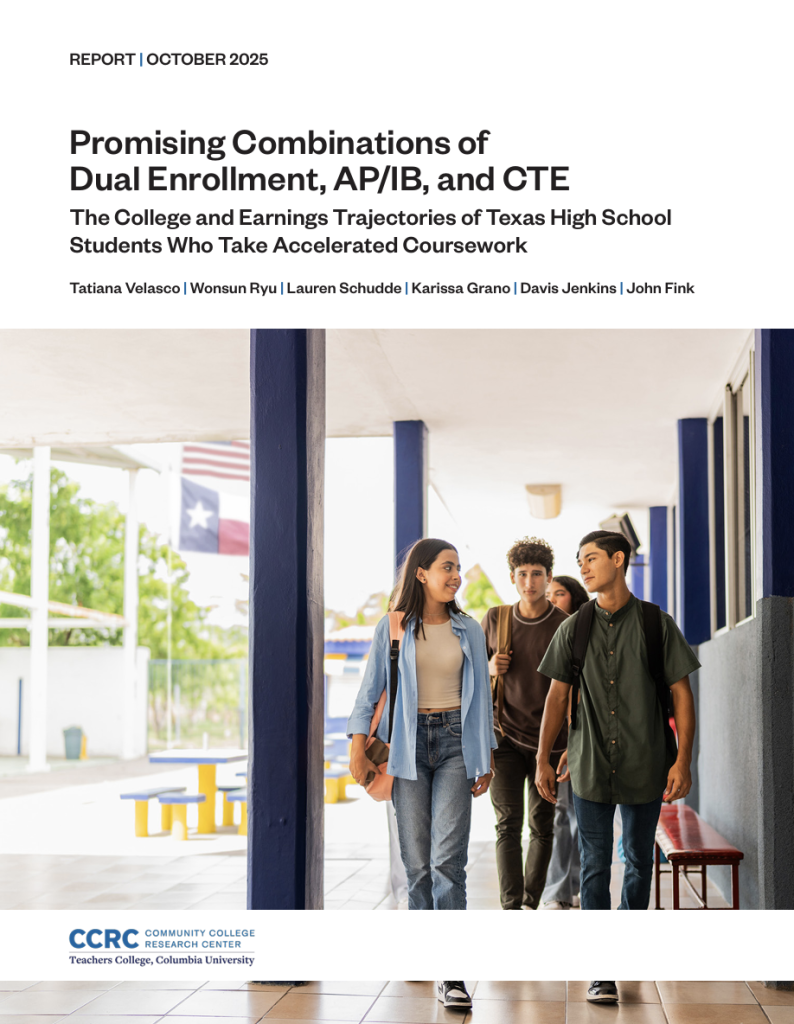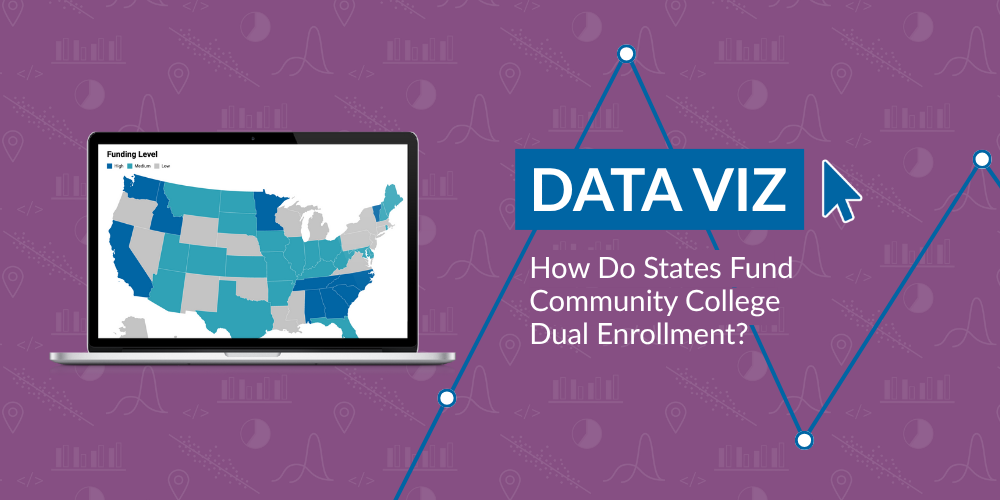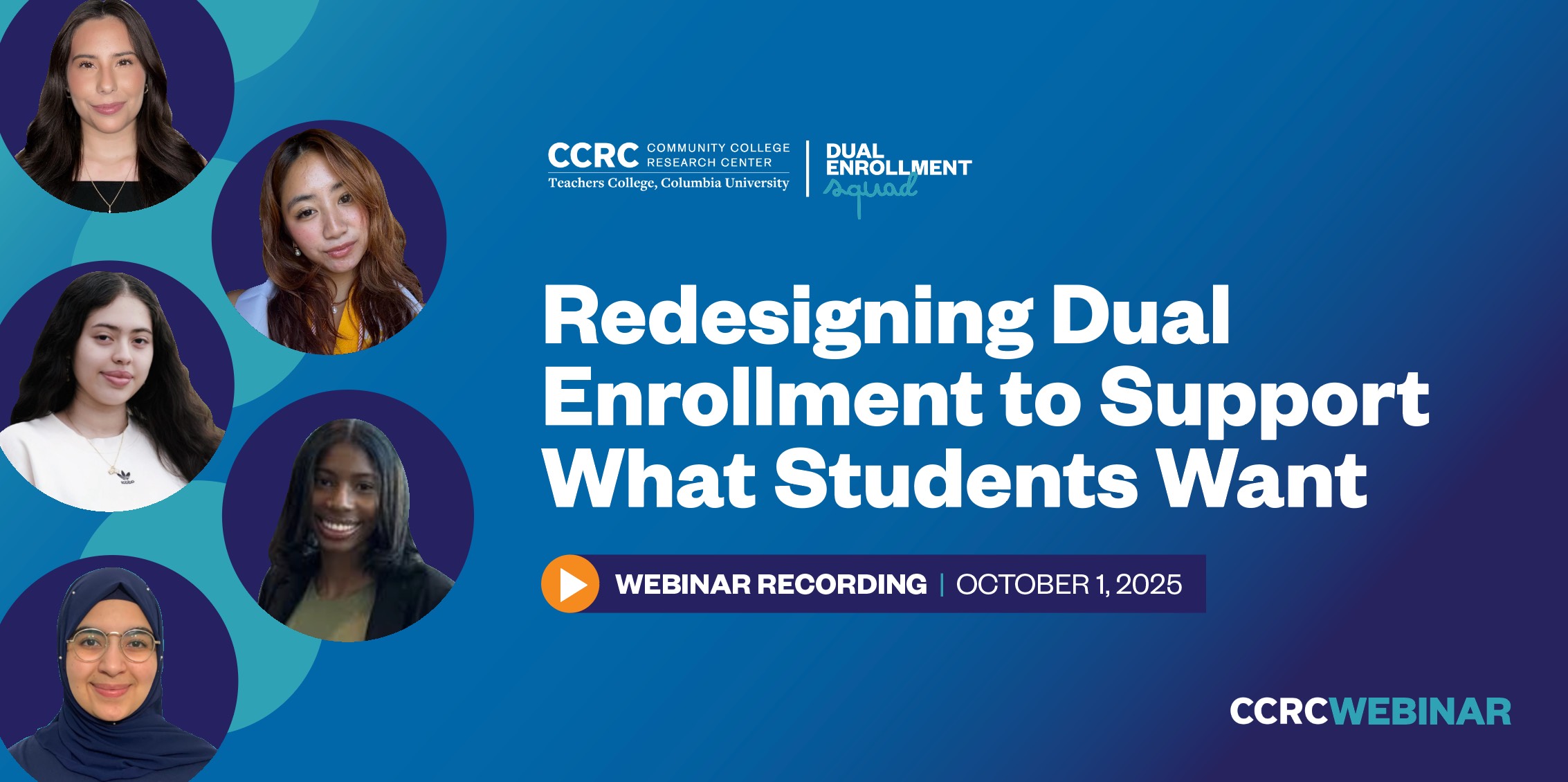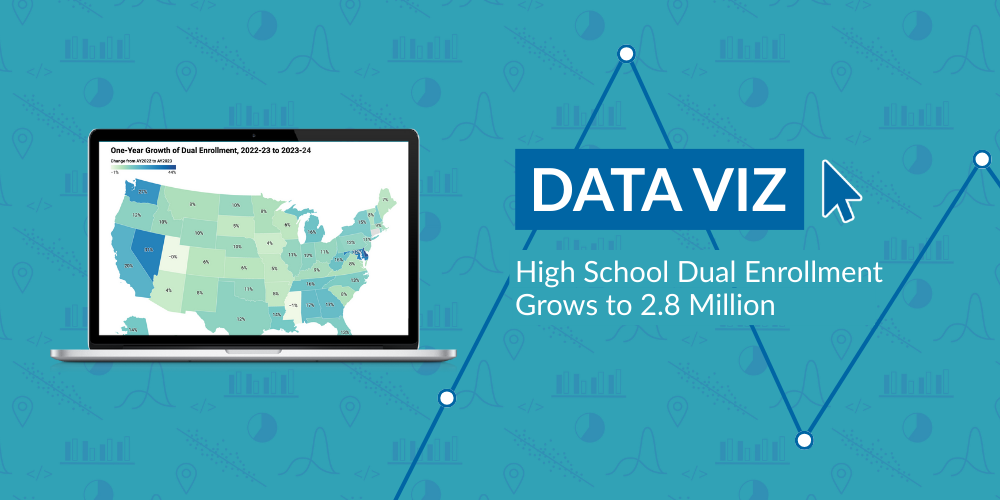Dual Enrollment
Millions of high school students take courses at community colleges through dual enrollment. CCRC studies how to make dual enrollment and the college transition a launching pad for success.
Fast Facts
01
There are nearly 2.5 million dual enrollment students, including 1.8 million taking courses at community colleges, making up 21% of community college students.
02
Dual enrollment programs are designed in various ways and go by different names. But they all provide the opportunity for students to earn college credit prior to completing high school.
03
Dual enrollment students are more likely to finish high school, enter postsecondary education, and complete college degrees compared to their non-dual-enrolled peers.
04
Dual enrollment participation is associated with better college outcomes for Black and Hispanic students, but the vast majority of school districts have racial/ethnic gaps in dual enrollment participation, and most states have gaps in outcomes by race/ethnicity and income.
Why We Study Dual Enrollment
Dual enrollment of high school students in college courses is a major area of research for CCRC. CCRC researchers seek to understand the scope and variety of dual enrollment offerings and innovative practices in dual enrollment and early college programs. CCRC is also exploring ways that dual enrollment can act as a more equitable on-ramp to college and make college more affordable for low- and middle-income students.
Dual enrollment is a fast-growing option for high school students who want to get a jump start on their postsecondary degree requirements. The number of high school students who are taking dual enrollment has grown at least fivefold since the late 1990s, and they now make up an increasingly important segment of the community college student body. As an extension of CCRC’s guided pathways research, CCRC is studying high school and community college partnerships that are reducing gaps in access to dual enrollment and realizing its potential to improve college outcomes for all students.
CCRC also studies interventions intended to boost college readiness among underprepared high school students. These reforms, including transition courses and summer bridge programs, complement CCRC’s extensive work on developmental education. For more on dual enrollment, read our fact sheet.

Featured Report
This report presents national and state-level college enrollment and completion outcomes of high school students who began taking dual enrollment college courses in fall 2015 through up to four years after high school.
What Do Dual Enrollment Students Want?
CCRC explored the experiences of students historically underserved in dual enrollment to understand what these students want from their programs. Students want to:
Have well-informed advisors who empower them
Know about dual enrollment options earlier
Take courses that are aligned with their career and academic pathways
Be engaged in their online courses
Know how to balance their high school experience with college coursetaking
Find scholarships and manage debt to attend college after high school
Diving Deeper Into Dual Enrollment Equity Practices
Dual enrollment equity pathways (DEEP) is a framework for rethinking dual enrollment as a more equitable on-ramp to college degree programs that prepare underserved students for well-paying, career-path employment in their 20s. Key DEEP practices:
Reach out to underserved students and schools
Align dual enrollment course offerings to college degrees and careers
Advise students to explore interests and develop plans
Support students by delivering high-quality instruction
Dual Enrollment Data Tools
This data dashboard displays state-by-state college-going and completion rates for dual enrollment students, broken down by student racial/ethnic group, neighborhood income, and gender.
Newly released data offers the most recent and comprehensive view of the scale of high school dual enrollment programs at postsecondary institutions across the country. This dashboard highlights growth and key takeaways.
Further Reading
High school to college
Our Dual Enrollment Experts
Read More
View all of our publications on dual enrollment and the high-school-to-college transition.

